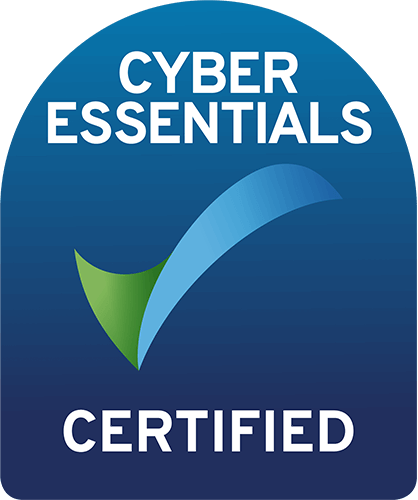Bricks alone don’t make a building. Without a design, they’re just stacked potential. Lifecycle plans based on isolated initiatives often miss the opportunity to build something enduring. Too often, they amount to a list of possible indications representing post-launch expansion opportunities. But without a clear strategic lens, those opportunities risk becoming a series of disconnected efforts rather than a cohesive long-term value plan.
The most effective lifecycle strategies aren’t just long lists of tactics – they’re carefully designed systems, activated with purpose from the earliest phases of development. When initiatives are considered in isolation, they risk becoming siloed efforts that don’t compound. But when planned with intention and alignment, lifecycle tactics can work together to amplify product value over time. It’s this orchestration – not volume alone – that drives durable impact. That’s why lifecycle planning must be grounded in a clear, shared strategic lens, established as early as possible in the product’s journey.
But even when the value of an early lifecycle management plan is clear, it’s not always obvious where to begin – especially when facing an open landscape of potential opportunities. To address this challenge, a practical framework can be applied to support structured thinking and better decision-making across an asset’s lifecycle: Breadth / Depth / Sustainability. This model encourages teams to move beyond the defaults of indication expansion and explore how to unlock full product value by considering three distinct but complementary objectives.
Introducing Align Strategy’s Lifecycle Management Framework: Breadth, Depth, Sustainability

- Breadth: How many patients can benefit from the product?
- Depth: How meaningfully does the product differentiate?
- Sustainability: How can total treatment opportunities be maximized for the patients who benefit from the product?
Planning with these in mind allows for a more strategic balance of opportunities and trade-offs, tailored to the asset’s scientific potential, market realities, and commercial ambition.
The Three Pillars of Lifecycle Value
This lifecycle management framework consists of three complementary objectives designed to deliver long-term value across an asset’s lifecycle.
Breadth: Expanding Who Can Benefit
This pillar focuses on maximizing the addressable patient population. Traditionally, breadth strategies involve expanding into new indications or geographies – and when executed well, they transform assets into franchise anchors.
📌 Case in point: Rinvoq and Skyrizi.
AbbVie achieved breadth across a wide range of inflammatory indications by pairing two targeted therapies with distinct mechanisms – a JAK inhibitor (Rinvoq) and an IL-23 inhibitor (Skyrizi) – and mapping their expansion across related specialties with precision. Rather than chasing every opportunity at once, AbbVie sequenced indications based on scientific rationale and market need, starting with high-burden, commercially attractive diseases like rheumatoid arthritis (Rinvoq) and psoriasis (Skyrizi). From there, they systematically expanded into adjacent inflammatory conditions – including psoriatic arthritis, ankylosing spondylitis, Crohn’s disease, and ulcerative colitis – capitalizing on shared immunopathology and overlapping prescriber bases. With an approach that reinforced scientific credibility and enabled commercial synergy, AbbVie transformed Rinvoq and Skyrizi into scalable growth platforms – a blueprint for achieving breadth with clear strategic intent.
Depth: Enhancing Competitive Edge Within the Core
Depth strategies focus on gaining share within existing or established indications. This often means enhancing the product’s value proposition through formulation changes, convenience improvements, or data generation that sharpens differentiation.
📌 Case in point: Januvia → Janumet
Launched in 2006 into a metformin-dominated diabetes market, Januvia was initially relegated to second-line use. But Merck saw an opportunity: by combining sitagliptin with metformin in a fixed-dose combination (Janumet), they created a compelling first-line option. Just 6 months after Januvia’s debut, Janumet launched and quickly became the franchise engine, reaching 37% of franchise sales by 2021. That’s what smart depth strategy looks like: anticipating market needs and proactively evolving the offering – and crucially, doing so early in the lifecycle before sitagliptin’s market positioning became entrenched.
Sustainability: Increasing Value Per Patient Over Time
This pillar of the lifecycle management framework is about maximizing treatment opportunities over time – ensuring that each patient who benefits from the product is able to start, stay on, and continue treatment effectively. Sustainability strategies focus on improving adherence, extending duration of therapy, and supporting long-term outcomes. They also create opportunities to extend market exclusivity through formulation innovation, delivery enhancements, or other mechanisms that reinforce both clinical value and commercial resilience.
📌 Case in point: Eylea HD (8mg)
Eylea transformed retinal disease treatment, but monthly intravitreal injections of the original 2 mg formulation posed a clear adherence barrier for patients. Regeneron responded by engineering Eylea HD (8 mg) – the first and only VEGF formulation approved for 8-week dosing, with potential extension to 24-week intervals. Approved in August 2023, the high-dose formulation quickly became a growth driver. In early 2025, US sales of Eylea HD rose 54% year-over-year to $307 million, even as the overall Eylea franchise slipped 26% to $1.04 billion in Q1. Growth continued into Q2, with Eylea HD net sales up 29% year-over-year to $393 million, while combined franchise sales declined 25% to $1.15 billion. This trajectory shows how adapting a product to real-world patient needs by reducing treatment burden and supporting patient adherence can sustain a brand’s relevance and resilience even as legacy formulations face competition and decline.
Matching the Framework to Asset Archetypes
Not every asset needs to push hard in all three pillars. In fact, the most effective LCM strategies tailor emphasis based on the asset’s scientific profile and strategic role, both within the treatment landscape and as part of the manufacturer’s broader portfolio. Here are three common archetypes and how they map to the lifecycle management framework:

1. The Platform Asset
These assets have broad immunologic or molecular targets and are often candidates for multi-indication development. Breadth is the engine – but needs to be selectively deployed to avoid dilution.
Example: Dupixent, an IL-4/IL-13 inhibitor, where expansion into dermatology, pulmonology, and immunology has been pursued sequentially based on Type 2 inflammation pathways and unmet need across atopic dermatitis, asthma, and eosinophilic diseases.
2. The Differentiator
These assets are not the first to market but offer meaningful improvements in safety, convenience, or efficacy. The focus is depth – establishing superiority or preference within an already-crowded space.
Example: Anti-CGRP therapies in migraine, where speed of onset or delivery format becomes the key battleground.
3. The Chronic Anchor
These assets are designed for long-term use in chronic conditions, often in neurology, endocrinology, or psychiatry. The sustainability pillar becomes the priority, requiring strategies to optimize adherence, persistence, and long-term data.
Example: Long-acting injectables or digital-enhanced adherence tools in schizophrenia or diabetes.
Understanding which archetype your asset aligns with can help guide LCM priorities and avoid over-investment in low-return strategies. But even when one pillar leads, the most effective strategies still consider all three objectives. True lifecycle value doesn’t come from breadth, depth, or sustainability alone – it comes from establishing the right balance between them. When planned thoughtfully and early in the asset’s lifecycle, the tactics under each pillar can reinforce one another. The result is greater than the sum of its parts: a strategy that scales impact, maximizes return on innovation, and ensures long-term relevance in a dynamic landscape.
Embedding the Framework Across Functions
A strategic lifecycle plan isn’t owned by any single function – it’s co-created and sustained cross-functionally. One of the key strengths of the Breadth / Depth / Sustainability Framework is its ability to create a shared language and strategic vision for the asset early on – one that transcends functional silos.
Rather than approaching lifecycle initiatives as isolated projects, the framework encourages all stakeholders to see how their ideas contribute to a deliberate balance across the three LCM objectives. By embedding this perspective early, teams from Medical Affairs, Regulatory, Commercial, Clinical Development, and beyond can:
- Appreciate how their contributions fit into the broader asset strategy rather than competing or overlapping efforts.
- Evaluate new ideas against the strategic vision to ensure alignment and prioritization of resources.
- Facilitate cross-functional dialogue about trade-offs and timing, enabling more informed decisions about which lifecycle opportunities to pursue and when.
For example, Medical Affairs might propose new real-world evidence studies that enhance depth by highlighting subpopulation benefits, while Clinical Development and Regulatory could explore label expansions that increase breadth into new markets. At the same time, Commercial teams might prioritize patient support programs aimed at sustainability, enhancing long-term adherence and brand loyalty.
When the lifecycle management framework is embedded as a shared strategic lens, it enables teams to move beyond fragmented task lists and instead focus on delivering a cohesive, balanced plan that drives sustained asset value.
The value of the Breadth / Depth / Sustainability framework lies in its ability to connect strategic intent with practical execution – not just what to do, but why and when.
How to Use the Lifecycle Management Framework Practically
Whether you’re building your first LCM plan or revisiting one already in motion, here’s how to apply the framework effectively:
- Start with vision. What is the long-term ambition for this asset – and what kind of legacy should it leave?
- Balance priorities early. Don’t wait until your Phase 3 trials are ongoing to align on what matters most; the most effective lifecycle management plans are developed early. Establish cross-functional agreement on how much to invest in breadth, depth, and sustainability – and when.
- Evaluate new opportunities with intent. Every potential lifecycle option should be assessed through the lens of the asset’s agreed balance of breadth, depth, and sustainability. If a new idea doesn’t reinforce that strategic mix, consider whether it’s the right investment to support the long-term vision.
- Make the plan live. LCM is not a one-and-done exercise. The best strategies are continuously pressure-tested as new competitors emerge, data evolves, and market dynamics shift.
Maximize Lifecycle Value – Start Early, Plan Intentionally
When done well, lifecycle management is a strategic enabler – not a box-ticking exercise. The Breadth / Depth / Sustainability framework offers a structured approach to unlock the full potential of your asset, across both time and market complexity.
Used as part of early lifecycle management planning, it can help teams prioritize smarter, align faster, and deliver more meaningful value over the full course of a product’s life.
Whether you’re jumpstarting an early lifecycle planning process or pressure-testing an existing approach, taking a step back to rebalance and refocus using our lifecycle management framework is a powerful way to make strategy tangible and actionable. Align Strategy partners with teams to unlock full product value – contact us to see how this framework and our tried-and-tested approach could support your lifecycle goals.


